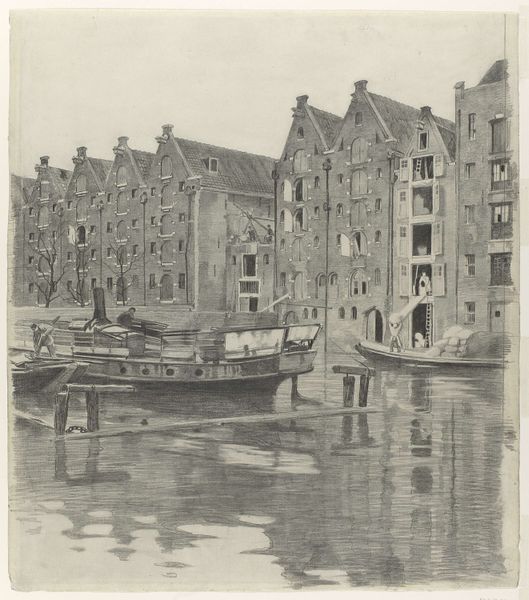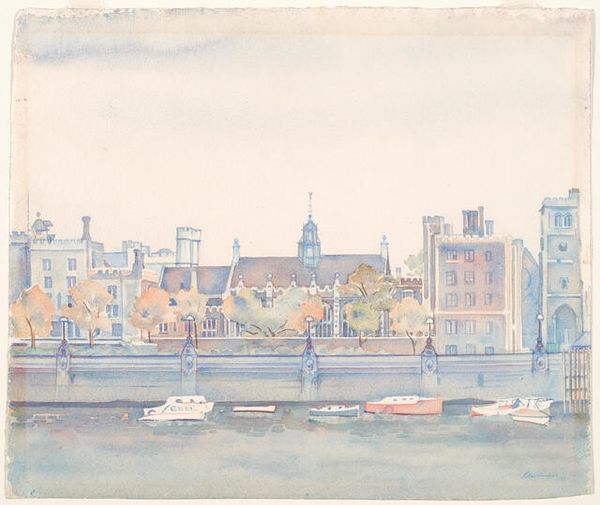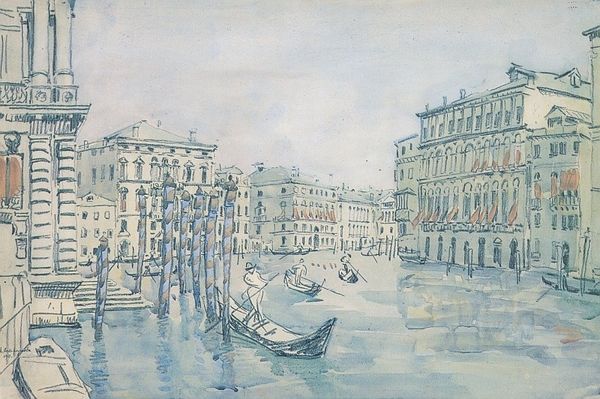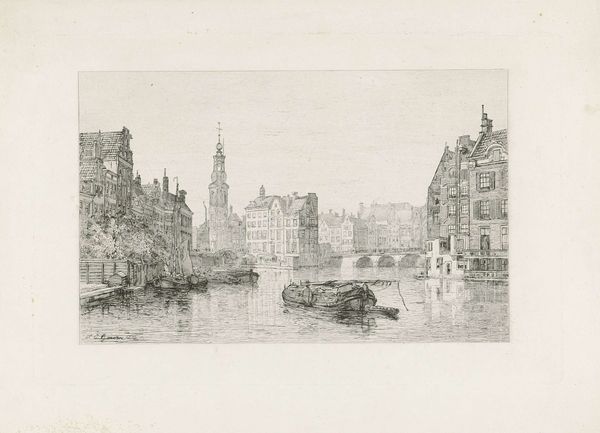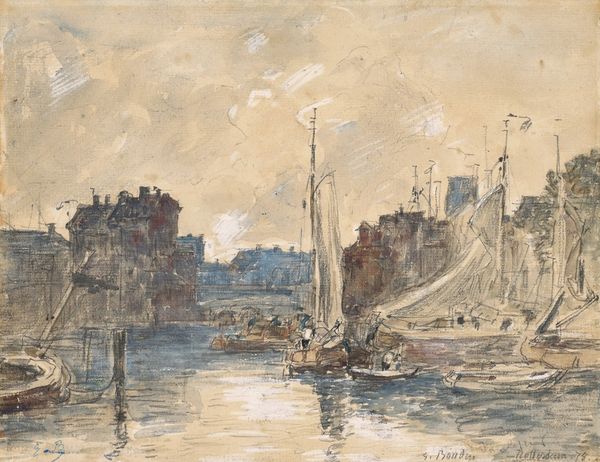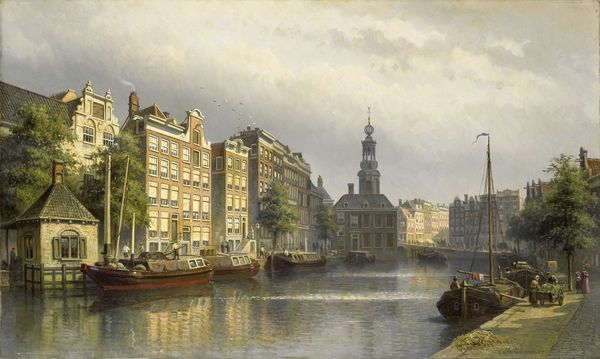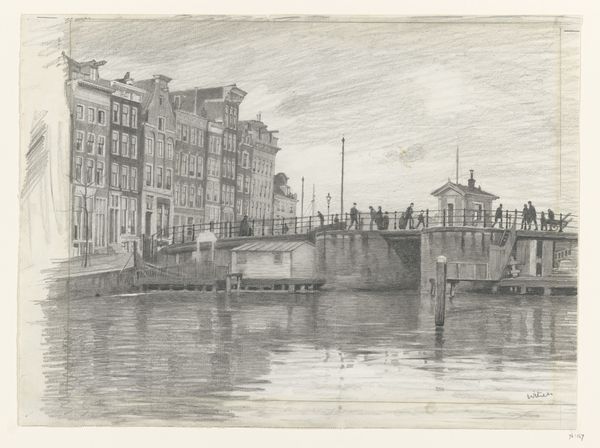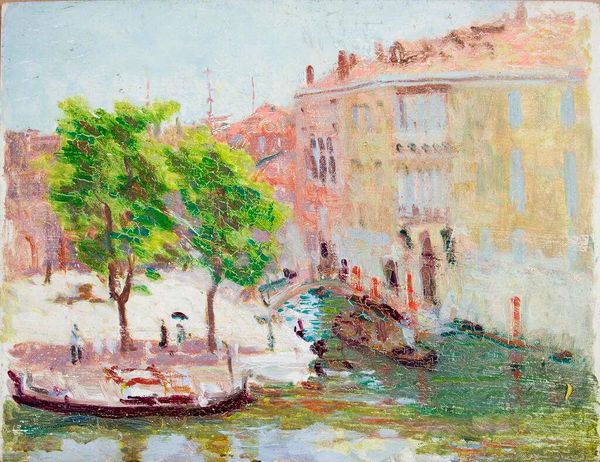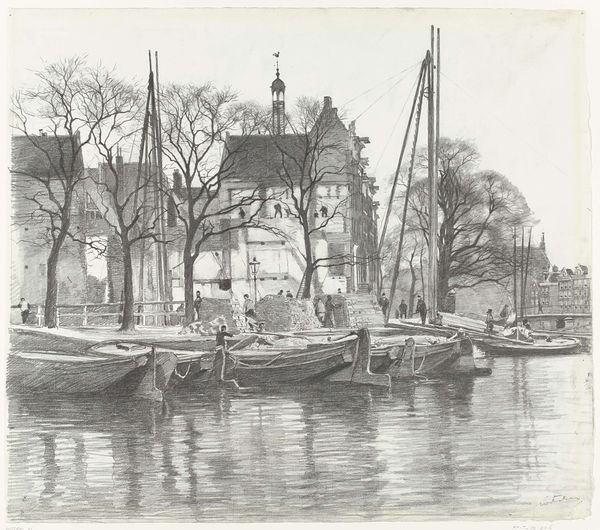
Copyright: Public domain US
Curator: Before us is Anna Ostroumova-Lebedeva's "Amsterdam. The market of iron," a watercolor created in 1913. Editor: It's quite subdued, isn't it? The muted blues and greys give it a very industrial, almost melancholy feel. Curator: Ostroumova-Lebedeva, despite working primarily in wood engraving and lithography, also experimented with watercolors like we see here. Amsterdam, at the turn of the century, was a bustling hub, and this piece offers us insight into its social fabric. How does this artistic depiction connect to broader urban realities of the era? Editor: I'm immediately drawn to the materiality – the way the watercolor bleeds and blends. This reflects, perhaps, the constant flow and exchange happening in the market. It is important to also note how Ostroumova-Lebedeva depicts what seem to be some type of loading dock that stretches alongside this waterway, indicating the commerce done on this area. Curator: Precisely. This artist challenges the dominant male perspective within Impressionism by focusing on working-class experience, which, as we can see, takes center stage rather than remaining an unseen backdrop to more bourgeois narratives. There is a focus here that moves from a passive reflection of urban space into the living and ever active labor that the market demands to prosper. Editor: Considering her wood engraving background, it is impressive to view such command with watercolors as we see with the details around the rooftops as well as the water reflections. Curator: And consider this also: during this period, female artists navigated pervasive sexism and often turned to cityscapes as a way to participate in discourses around modernity while sidestepping restrictions placed on other subject matters, such as portraits. What might seem like just a lovely cityscape is, in fact, a statement. Editor: Absolutely. It's a window into the social and economic engine of Amsterdam, viewed through a carefully constructed, almost hazy, lens. The water, and how its movement gives life to this whole space. It’s a reflection of commerce, but more significantly a material reflection. Curator: Ostroumova-Lebedeva compels us to consider the multilayered dynamics of identity, artistic expression, and social commentary. Editor: This watercolor gives insight to how the waterways enabled the prosperity of Amsterdam, through a fascinating perspective of both technique and form.
Comments
No comments
Be the first to comment and join the conversation on the ultimate creative platform.
